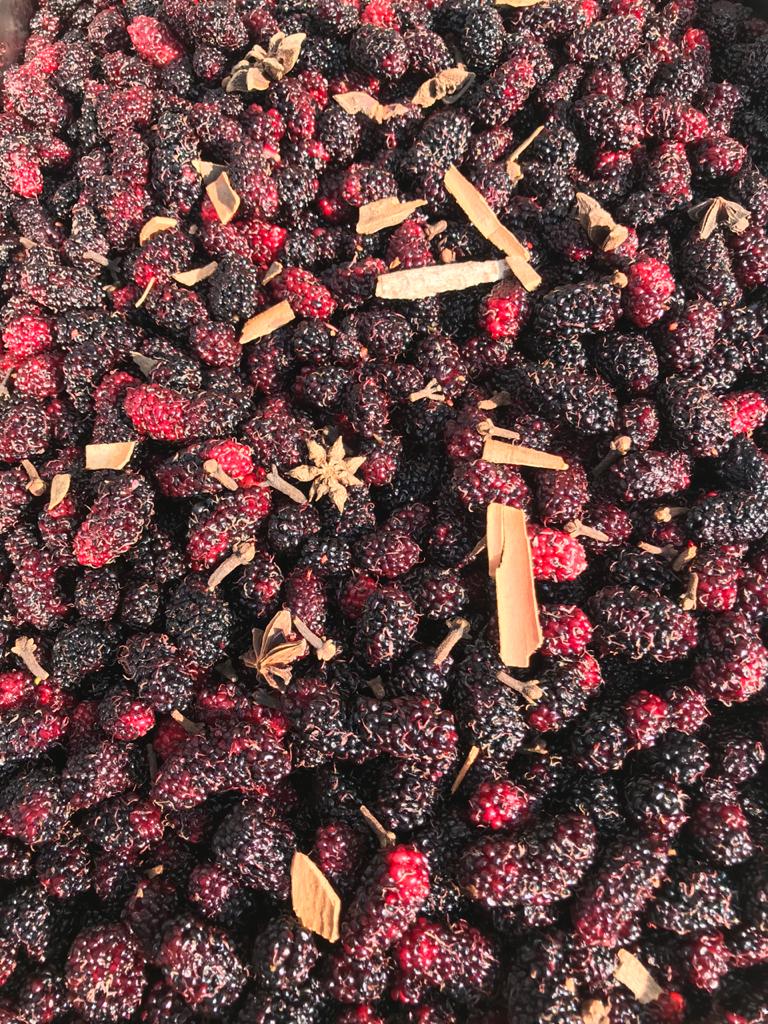
In a recent video by the Best Ever Food Review Show, host Sonny takes us on a gastronomic adventure, sampling some of the most unusual and delicious foods the fair has to offer. From deep-fried delicacies to innovative meat dishes, this journey is a testament to the creativity and diversity of food available at the Texas State Fair.
So, without further ado, let’s dive into the top 10 foods recommended in the video:
10. Injectable Great Balls of BBQ 🍖: Kicking off our countdown at number 10, we have the Injectable Great Balls of BBQ. This dish takes shredded beef brisket, forms it into a ball shape, and deep-fries it to perfection. But the real fun begins when you’re handed a syringe filled with tangy BBQ sauce. Inject the sauce into the ball and experience a flavor explosion that will leave your taste buds dancing! It’s a fun, interactive dish that combines the smoky, savory flavor of brisket with the tangy sweetness of BBQ sauce in a way that’s sure to delight. 💥
9. Lollipop Fried Bacon Wrapped Scent Sandwich Smoked Quail Breast 🍗: At number 9, we have a dish that’s as tasty as it is unique. Imagine a quail breast, wrapped in crispy bacon, and fried to perfection. The quail breast is tender and juicy, while the bacon adds a smoky, savory flavor that complements the quail perfectly. Served with a side of onion rings, this dish offers a delightful combination of flavors and textures that will leave you craving for more. It’s a gourmet treat that’s sure to impress. 😋
8. Brisket Waffle Fried Nachos 🍟: Coming in at number 8, we have the Brisket Waffle Fried Nachos. This dish takes waffle fries, shakes them in a mixture of dry spices, and tops them with a mountain of juicy smoked brisket. Add a generous serving of cheese sauce, fresh toppings, and a drizzle of barbecue sauce, and you have a Texan twist on a classic dish that’s simply irresistible! The waffle fries are crispy and flavorful, providing the perfect base for the smoky brisket and creamy cheese sauce. It’s a hearty, satisfying dish that’s sure to be a hit. 🤠
7. Stuffed Wings 🍗: At number 7, we have the Stuffed Wings. These wings are deboned and stuffed with a mixture of spices, onions, cilantro, rice, and more chicken. After stuffing, the wings are deep-fried until the skin becomes crispy. The result is a mouthwatering dish that offers a delightful contrast of textures and a burst of flavors with every bite. The stuffing is flavorful and hearty, while the chicken wing is crispy on the outside and tender on the inside. It’s a unique take on the classic chicken wing that’s sure to impress. 🐔
6. Deep Fried Seafood Gumbo Balls 🍤: At number 6, we have the Deep Fried Seafood Gumbo Balls. This dish takes theclassic ingredients of a gumbo recipe, including rice, chicken, panko bread crumbs, a homemade roux, shrimp, and andouille sausage, and forms them into balls. These balls are then deep-fried, resulting in a seafood lover’s dream come true! Each bite offers a burst of flavors, from the savory shrimp and sausage to the hearty rice and roux. It’s like having a bowl of gumbo in a convenient, bite-sized form. 🌊
5. Fried Coke 🥤: Breaking into the top 5, we have the Fried Coke. This unique treat is a dough mixed with Coke flavoring and Coke syrup that gets deep-fried and topped with whipped cream, cinnamon sugar, and a slice of strawberry. The result is a sweet and fizzy delight that’s unlike anything you’ve ever tasted. The dough is light and fluffy, with a hint of Coke flavor, while the whipped cream adds a creamy sweetness. The cinnamon sugar and strawberry provide the perfect finishing touches, making this a dessert you won’t want to miss. 🍓
4. Fried Butter 🧈: At number 4, we have the Fried Butter. This heart-stopping dish is a butter cube wrapped in dough, deep-fried, and topped with honey and cinnamon sugar. It’s like a perfect moment of fresh baked bread with soft, barely melted butter in one bite. The dough is crispy on the outside and soft on the inside, while the butter provides a rich, creamy flavor that’s perfectly balanced by the sweetness of the honey and cinnamon sugar. It’s pure indulgence that’s worth every calorie! 🍞
3. Funnel Cake Bacon Queso Burger 🍔: Securing the third spot, we have the Funnel Cake Bacon Queso Burger. This burger features a freshly grilled beef patty and crispy bacon sandwiched between two burger-sized funnel cake buns. It’s then doused with queso, a liquid Tex-Mex cheese dip, and sprinkled with powdered sugar. The funnel cake buns are sweet and crispy, providing a unique contrast to the savory beef patty and bacon. The queso adds a creamy, cheesy flavor that ties everything together. It’s a carnival in a burger, offering a delightful mix of sweet and savory flavors that will leave you wanting more! 🎡
2. Texas Easter Egg 🥚: Just missing the top spot, at number 2, we have the Texas Easter Egg. This deep-fried jalapeno popper is packed with cream cheese, cheddar cheese, beef brisket, bacon, green chilies, jalapenos, and Tex-Mex seasoning. It’s shaped like an egg and coated in bread crumbs and Italian seasonings. The jalapeno provides a spicy kick, while the cream cheese and cheddar cheese add a creamy, cheesy flavor. The beef brisket and bacon add a smoky, savory flavor that complements the spiciness of the jalapeno. It’s a spicy surprise that’s sure to delight your taste buds! 🌶️
1. Taco Cone 🌮: And finally, at number 1, we have the Taco Cone! This isn’t your average taco. The Taco Cone is a cone-shaped taco filled with barbacoa, black beans, cilantro lime rice, shredded lettuce, and pico de gallo, all topped with queso and served with a lime wedge. The barbacoa is tender and flavorful, while the black beans and rice add a hearty element. The lettuce and pico de gallo provide a fresh contrast, while the queso adds a creamy, cheesy flavor. It’s afun and delicious twist on a classic that’s well deserving of the top spot on our list! 🎉🥇
These are just the top 10 foods featured in the video. Each dish is a testament to the creativity and culinary prowess of the vendors at the Texas State Fair. From deep-fried delights to innovative meat dishes, there’s something for everyone.
For more details about these foods and to discover even more unique dishes, check out the full video by the Best Ever Food Review Show. Trust us, your taste buds will thank you! 🤤🍴
Remember, this is just a taste of what the Texas State Fair has to offer. The fair is a culinary adventure, a place where you can explore new flavors, try unique dishes, and indulge in your favorite comfort foods. So, what are you waiting for? Get out there and start exploring! 🚀🌮🍔🍗🍤🥤🧈🥚🌶️🎉🥇
The Texas State Fair is a celebration of food, a place where culinary dreams come true. So, grab your fork and join us on this gastronomic adventure. Your taste buds are in for a treat!













